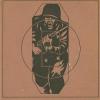Search the Community
Showing results for tags 'dh2'.
Found 1 result
-
Flying the 'spinning incinerator' in Wings over Flanders Fields! "Led by Lanoe Hawker, No.24 Squadron (DH2s), Britain's first single-seater scout squadron, arrived in France on 8 February 1916 in great excitement but was immediately absorbed in a crisis of its own. The day after their arrival, one of the flight commanders, on the first flight of a DH2 from a French airfield, got into a spin and failed to recover. Five days later, another pilot spun in, and this time the machine caught fire. It had happened before, earning the DH2 the grisly sobriquet of the 'spinning incinerator'...Hawker responded by taking up a DH2 and, according to his biographer, spinning it from every conceivable angle, engine on and engine off, and demonstrating how, with correct remedial action, and provided there was sufficient height, it always recovered." Ralph Barker, 'A Brief History of the Royal Flying Corps', Constable & Robinson, 2002 Major Lanoe George Hawker, VC, DSO, deserves to be remembered not so much as a famous early victim of Manfred von Richthofen in November 1916, but rather, as the aggressive pioneer air fighter who won a VC for victories over three Germain aircraft - all I think machine-gun armed 2-seaters - on a single day in July 1915, flying a Bristol Scout with a Lewis Gun which had to be fixed to fire at an angle ahead to clear the prop disc - a real feat of arms. This is the actual machine he flew: As a Flight Commander in those days, Hawker's motto, pinned to the notice board, was 'Attack EVERYTHING!' and it was certainly a dictum he lived up to. Later, he was a natural choice to lead the Royal Flying Corps' first real single-seat fighter squadron. Just as No.24 Squadron was a natural choice of unit, when I decided to fly an early-war British fighter campaign in Wings over Flanders Fields. I had only just ended a 1916 campaign in another 'pusher', the two-seat F.E.2 - after one mission! We crashed after a dramatic collision with a Fokker... ...which didn't survive the encounter... We lasted a bit longer, surviving further damage in another Fokker attack as we drifted down with a dead motor and elevator control gone, but didn't live through the ensuing crash landing... So, you might say that I had a score to settle, when I chose to try my hand with another lattice-tailed aircraft, the De Havilland D.H.2, which was credited with a large part in ending the 'Fokker Scourge'. My new career starts in early March 1916, with 24 Squadron's first operations following its deployment to Bertangles in Flanders. You can see from the roster that the redoubtable Major Hawker is very much on the squadron roster - COs were forbidden to fly on ops due to the need to preserve experienced leaders, but Hawker still flew, letting one of the other flight commanders lead. One of whom is me, for my pilot, Lieutenant 'Jock' Higgins - no relation to famous pioneer RFC flier 'all bum and eyeglass' J.F.A. 'Josh' Higgins - is the leader of 'B' Flight. Our first mission is a patrol up to the lines, more or less directly to the east. I'm leading no less that six machines, and 'A' flight are putting up another four, so we should be able to give any Huns we meet a run for their money. The C.O isn't flying with me today, but I see one or two other famous names in my flight, including the later Air Marshall Sir Robert Saundy, who wasn't a 'Sir' (knighted) in 1916, butI think should be an officer by that point, rather than the Sergeant he's recorded as...maybe the Recording Officer has made a bit of a mix-up in the squadron roster somewhere. We make a fine sight on the grass before the sheds at Bertangles in the fine early morning March weather... ...and it's not long before we're off the ground and climbing away. Those Huns had better watch out - 'Twenty-four' has opened shop and means to do some business this day! ...to be continued!


